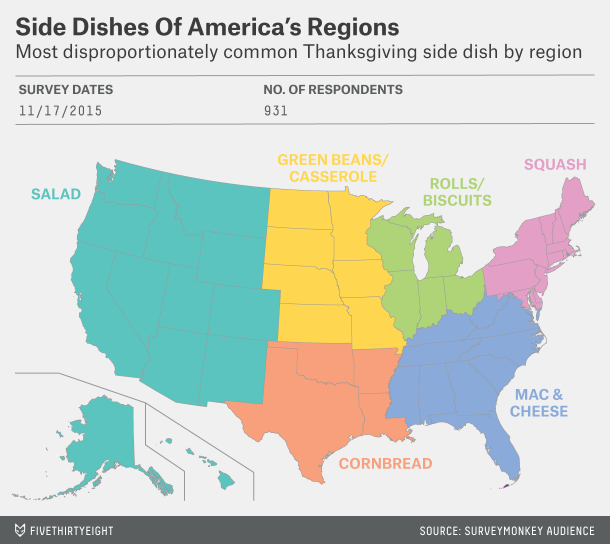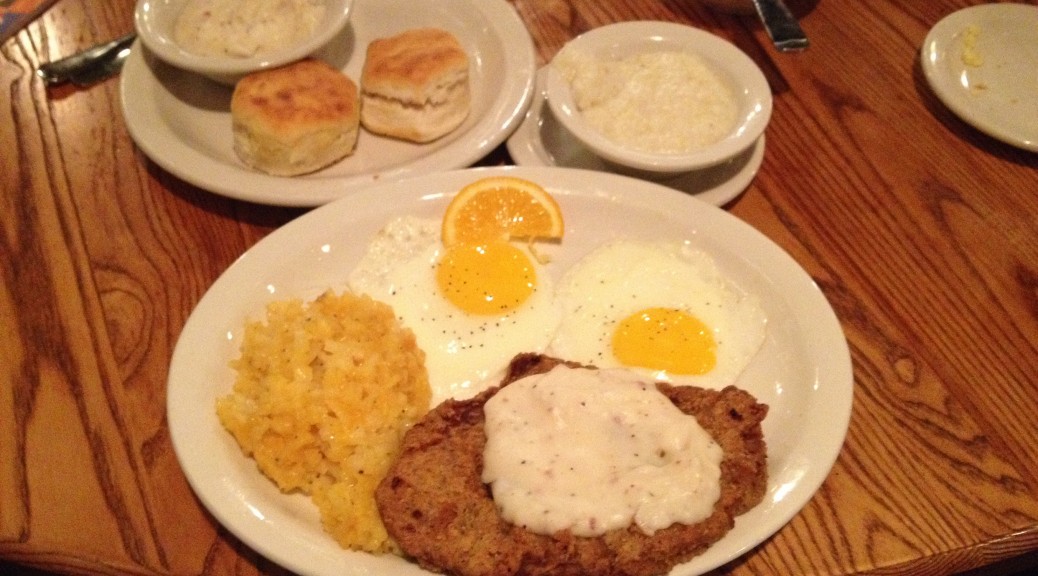Happy Thanksgiving everybody! Here’s hoping that the smell of roasting turkey soon fills your house, although my personal preference is to deep fry.
In the spirit of the season I wanted to share some survey data compiled by fivethirtyeight.com showing the regional eating patterns of my favorite holiday. Their data shows the most popular side dish in each part of the country. Does your family fit the regional profile or does it go against the grain? I came to a startling conclusion when I looked at the map, “Dear God we serve every single one of these in my house.” Then again, we do Thanksgiving big.
There is one side dish we serve that is not listed on their survey, rice and black beans. While that may not sound like a typical Thanksgiving side dish it certainly is in homes like mine that have a Cuban background. A common practice for immigrant families is to adopt the cultures and traditions of their new home, such as Thanksgiving. The twist is that these families will also incorporate portions of their own culture into the new tradition. Growing up it was customary for us to have a turkey roasting in the oven while simultaneously doing a traditional Cuban pig roast in the backyard.
Does your family have any Thanksgiving traditions that people might find odd? If so feel free to share them in the comments section below.
For the full article from fivethirtyeight.com follow this link. Quick warning: there are some colorful references to what people do after their Thanksgiving meal.



